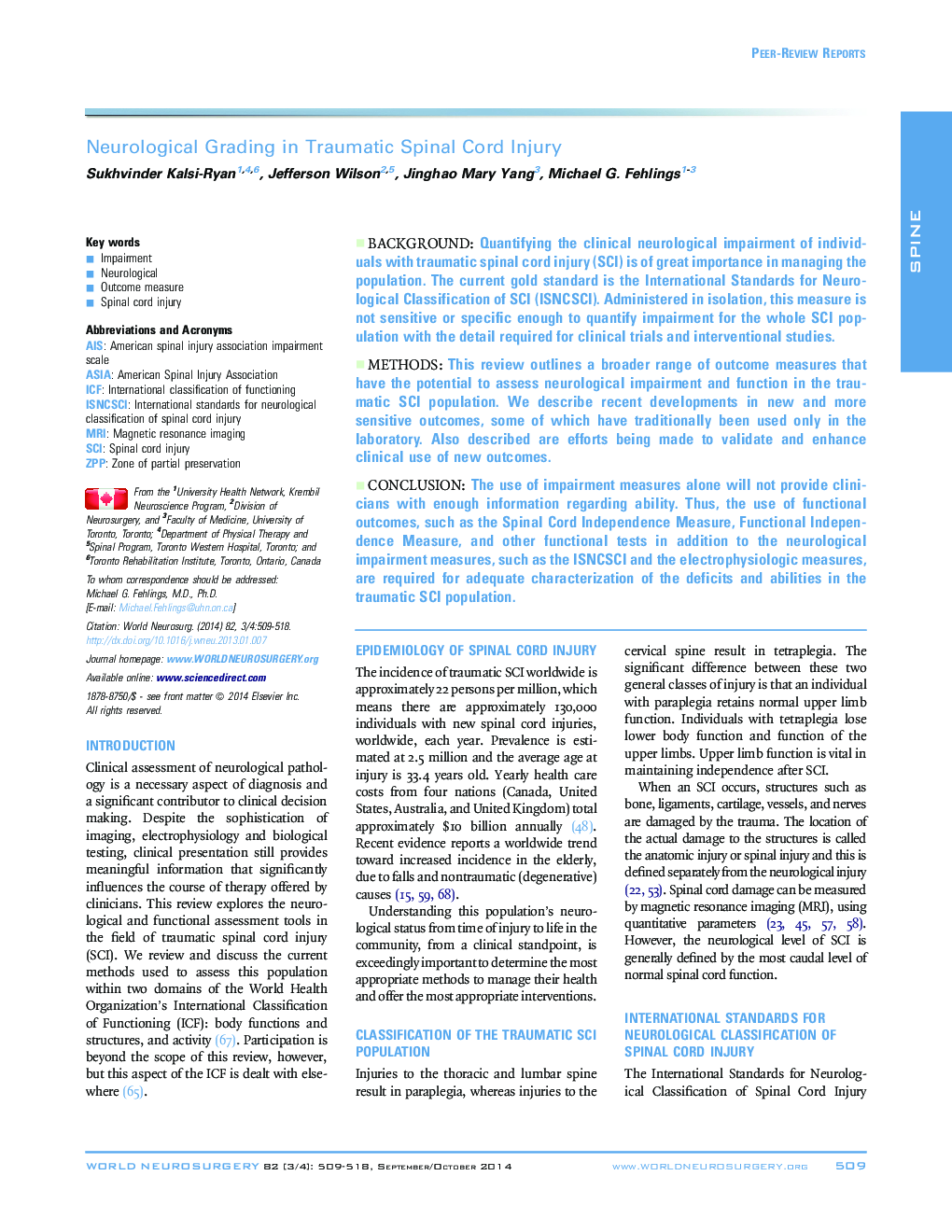| کد مقاله | کد نشریه | سال انتشار | مقاله انگلیسی | نسخه تمام متن |
|---|---|---|---|---|
| 3095459 | 1581471 | 2014 | 10 صفحه PDF | دانلود رایگان |
BackgroundQuantifying the clinical neurological impairment of individuals with traumatic spinal cord injury (SCI) is of great importance in managing the population. The current gold standard is the International Standards for Neurological Classification of SCI (ISNCSCI). Administered in isolation, this measure is not sensitive or specific enough to quantify impairment for the whole SCI population with the detail required for clinical trials and interventional studies.MethodsThis review outlines a broader range of outcome measures that have the potential to assess neurological impairment and function in the traumatic SCI population. We describe recent developments in new and more sensitive outcomes, some of which have traditionally been used only in the laboratory. Also described are efforts being made to validate and enhance clinical use of new outcomes.ConclusionThe use of impairment measures alone will not provide clinicians with enough information regarding ability. Thus, the use of functional outcomes, such as the Spinal Cord Independence Measure, Functional Independence Measure, and other functional tests in addition to the neurological impairment measures, such as the ISNCSCI and the electrophysiologic measures, are required for adequate characterization of the deficits and abilities in the traumatic SCI population.
Journal: World Neurosurgery - Volume 82, Issues 3–4, September–October 2014, Pages 509–518
